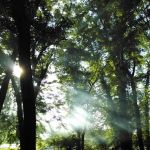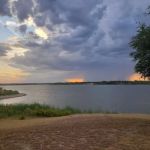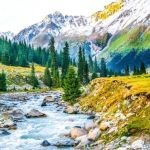- 1 - Why the best apps matter for travelers
- 2 - How star and planet apps work in the field
- 3 - Choosing the right app for your itinerary
- 4 - On-the-road workflows that actually work
- 5 - Real travel stories: from city rooftops to desert skies
- 6 - Expert tips, ethics, and safety under dark skies
- 7 - Plan your sky-forward journey with Refined Travel
1 - Why the best apps matter for travelers
When you’re chasing a perfect night sky on the road, guesswork wastes precious darkness. The Best Apps for Identifying Stars and Planets turn a confusing dome of lights into a readable map—pinpointing Jupiter near the horizon, naming that bright “star” that’s actually Venus, and tracing the Milky Way arch for photography. For travelers, this technology means fewer missed moments and more confident planning around weather, light pollution, and timing.
Beyond novelty, these tools help you decide whether to detour for a meteor shower peak or stay put for a rising galactic core. In other words, a strong app isn’t just an accessory—it’s a planning instrument that helps you use the night like locals who know their skies.
2 - How star and planet apps work in the field
Most modern star map apps use your phone’s sensors—GPS, compass, and gyroscope—to align a dynamic sky chart with your viewpoint. Augmented reality overlays then label constellations, deep-sky objects, and planets in real time. Many also include “time travel” sliders so you can preview the sky hours or months ahead, which is invaluable for travelers planning around moon phases or seasonal constellations.
Crucially, the best apps for identifying stars and planets also integrate ephemeris data (rise/set times, altitude/azimuth) and light-pollution maps. When you’re out in new territory, that combination answers two questions fast: “What’s up now?” and “Where should I stand to see it best?”
3 - Choosing the right app for your itinerary
Different trips demand different features. If you’re city-hopping with limited dark windows, prioritize quick AR labeling and notification tools that ping you when the International Space Station or a bright planet clears nearby rooftops. Road-trippers and campers should focus on offline star charts, red-light night modes, and battery-sipping interfaces for long sessions away from chargers.
Astro-curious photographers will want precise Milky Way positioning, moon phase calendars, and horizon simulators to frame foregrounds at blue hour. Families with kids often prefer apps that transform mythology into bite-sized stories—because a curious seven-year-old who can “find Orion” will be the first to remind you to step outside at twilight.
4 - On-the-road workflows that actually work
4.1 - A two-minute setup that pays off all night
Before you leave your hotel, download offline sky packs for your destination, calibrate the compass, and set notifications for planetary conjunctions. Switch your app to a red-light theme to preserve night vision; your eyes will thank you after ten minutes under the stars.
4.2 - Spotting and confirming quickly
Point your phone to the sky to identify a bright target, then cross-check with the app’s ephemeris table. If the label says “Saturn • Alt 18° • SE,” you can nudge your tripod 10° higher and start observing with confidence. This habit—identify, confirm, frame—turns guesswork into a smooth routine.
4.3 - Planning around the moon
For Milky Way views, the moon is your make-or-break variable. Use the app’s timeline to pick a post-moonset window or a new-moon weekend. For lunar lovers, do the opposite: plan your city walk to coincide with a high, gibbous moon over a skyline and use the app to predict when it lines up with a landmark.
5 - Real travel stories: from city rooftops to desert skies
5.1 - The rooftop Jupiter moment
On a chilly fall night in Lisbon, a traveler swore the “star over the river” was just another airplane. A quick check with a planet identifier app revealed Jupiter inching above the eastern haze. The app’s magnified planet card showed its moons’ positions; through a small travel scope, two tiny points popped into view—instant joy, zero guesswork. The Best Apps for Identifying Stars and Planets didn’t just label a dot; they turned a balcony break into a memory.
5.2 - Bryce Canyon, first-timer’s Milky Way
Camped near Bryce, a couple used an AR sky guide to time the core’s rise between hoodoos. With the app’s light-pollution overlay and wind forecast, they swapped a crowded turnout for a quieter pull-off and caught the Milky Way threading the rock spires at 2:15 a.m. Their takeaway: the app was a guide, but their patience and a thermos of cocoa did the magic.
5.3 - Northern Lights reality check
In Iceland, a group chasing auroras compared social media hype with live KP forecasts in their stargazing app. A modest solar storm still delivered pale curtains, and the app’s compass overlay helped them aim north between gaps in clouds. No viral green storms—just a quiet, real sky, and that was enough.
6 - Expert tips, ethics, and safety under dark skies
6.1 - Work with the landscape you have
If light pollution is unavoidable, use your app’s target filters to chase bright planets, the moon, and double stars instead of faint nebulae. A simple “what’s bright tonight” list keeps urban sessions satisfying and educational.
6.2 - Protect the night and yourself
Dim screens, shield lights, and stick to established paths—your night vision and local wildlife both benefit. Let someone know your plan if you’re heading to a remote overlook, and pack layers; the best constellation views often arrive when temperatures drop and crowds go home.
6.3 - Calibrate, then trust—but verify
Phone sensors drift. Re-calibrate when labels seem “off,” and double-check the app’s alt/az with a real horizon reference. Experts do this reflexively; it keeps your IDs clean and your photos framed correctly.
7 - Plan your sky-forward journey with Refined Travel
Ready to put The Best Apps for Identifying Stars and Planets to work on a real itinerary? Build your next trip around dark-sky parks, lunar events, or a meteor shower peak. For hand-picked routes, stargazing-friendly stays, and curated night-sky experiences, explore Refined Travel. From urban rooftops to desert mesas, we match your travel style with skies worth staying up for—and share the app workflows that make every minute under the stars count.
Want to learn more or customize a sky-chasing getaway with expert guidance? Plan your adventure with Refined Travel and turn your phone’s star map into a passport to the night.







 River Run RV Campground Bonifay4.0 (7 reviews)
River Run RV Campground Bonifay4.0 (7 reviews) Scenic View Campground4.0 (120 reviews)
Scenic View Campground4.0 (120 reviews) Camp Robin Rogers4.0 (40 reviews)
Camp Robin Rogers4.0 (40 reviews) North River Campsite (SRTA)5.0 (1 reviews)
North River Campsite (SRTA)5.0 (1 reviews) Copperas Creek Park4.0 (134 reviews)
Copperas Creek Park4.0 (134 reviews) Seymour Johnson AFB Campground4.0 (14 reviews)
Seymour Johnson AFB Campground4.0 (14 reviews) Exclusive Travel Packages for First-Class Travelers: A Guide to Luxury Vacations
Exclusive Travel Packages for First-Class Travelers: A Guide to Luxury Vacations Refined Travel Experiences in Southeast Asia: Explore Luxury & Unique Destinations
Refined Travel Experiences in Southeast Asia: Explore Luxury & Unique Destinations How to Make the Most of Luxury Vacation Deals: Expert Tips for Savvy Travelers
How to Make the Most of Luxury Vacation Deals: Expert Tips for Savvy Travelers How to Enjoy a Refined Travel Experience in the Mountains
How to Enjoy a Refined Travel Experience in the Mountains Refined Travel Itineraries for Art and Culture Lovers: Explore the World of Art and History
Refined Travel Itineraries for Art and Culture Lovers: Explore the World of Art and History Most Luxurious Destinations for Honeymooners: Top Spots for Romance and Luxury
Most Luxurious Destinations for Honeymooners: Top Spots for Romance and Luxury